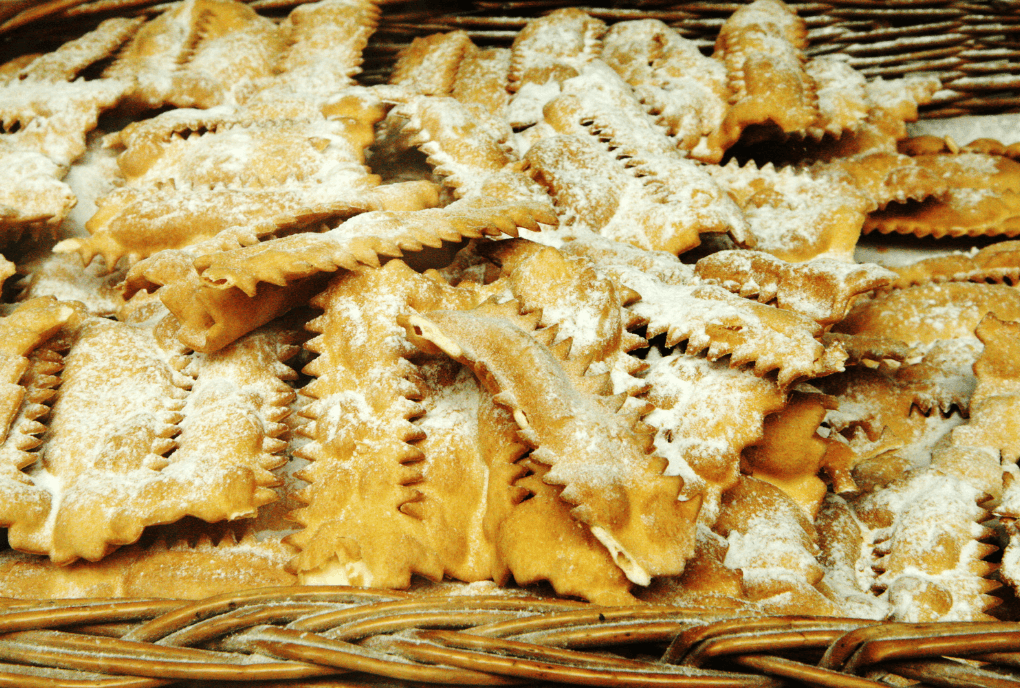
The Carnival of Sicilian Flavors
It may seem obvious to say, but the festivals in Sicily are always a great occasion to set the tables with tasty and traditional dishes. Between fried foods, appetizers, first courses and especially desserts, the embarrassment of choice is assured!
The link between food and carnival
In Sicily, the feast is done at the table and, in keeping with tradition, the period of Carnival brings with it exquisite sweet preparations that have become part of the Sicilian culinary tradition.
La carnival party has very ancient origins, inspired by Latin and Greek celebrations that included masked groups and floats. The name is derived from the Latin “carnem levare” meaning “to eliminate meat and refers to that period before the fasting of Lent. So, this holiday has always had to do with the food, in a perfect balance between sacred e layman.
It is really a carefree time before the Lenten restrictions centered on fasting and abstinence. And it is precisely in anticipation of that period of “deprivation” that on those festive days we indulge in excesses, especially at the table. That is why the Sicilian Carnival sweets are so good and rich!
Chatter in Sicily
Iconic Carnival dessert, not only in Sicily but throughout Italy, are the chiacchiere. These irregularly shaped treats are really simple to make and can be fried or baked in oven.
But Sicilians, gluttons par excellence, have found ways to make them even tastier than they already are. Therefore, on the Island are also made stuffed e frosted. Usually the filling is made of ricotta cheese, while the icing varies from chocolate to one made with the beloved pistachio. The green gold of Sicily, it is also often used within the dough in addition to flour.
Turco’s heads
Turco’s heads, typical of a small town in the province of Palermo, are a layered spoon dessert. They consist of very thin sheets that, after being fried, are alternated with a cream of milk, cinnamon and lemon. Their history is linked to the celebrations that followed the defeat of the Arabs by the Normans. It was on that occasion that the citizens, in celebration of their newfound freedom, created this cake.
The pignoccata
Made initially in the municipalities of the former county of Modica, the pignoccata, “pagnuccata” in dialect, is also widespread now in the rest of Sicily, even under other names. Its texture is hard at first impact, but extremely soft once you sink your teeth in. Specifically, these are irresistible dough balls, uneven in size, that are fried in hot oil and decorated with a cascade of honey or colored sugar sprinkles.
Carnival sphinxes
The origin of Carnival sfinci is still debated today. Some claim that the dessert is the natural evolution of a pancake handed down from the Arabs, while others think that sfinci are the direct “cousins” of the sfince di san Giuseppe and the Palermo sfincione. In spite of debates regarding the origin, the taste of this typical carnival time dessert gets everyone to agree!
The sfinci are pancakes with a spongy texture, in fact their name comes from the Latin “spongy“, and are made from a dough that, after rising for about two hours, can be enriched with nuts or raisins. The classic version is made by leaving the dough au naturel; at most, orange or lemon peels are added to give it a more aromatic taste.
Many, in Sicily, are the typical sweets of the Carnival period, but there is something that unites them all: the frittura that never fails!
by Giada Saglimbeni





